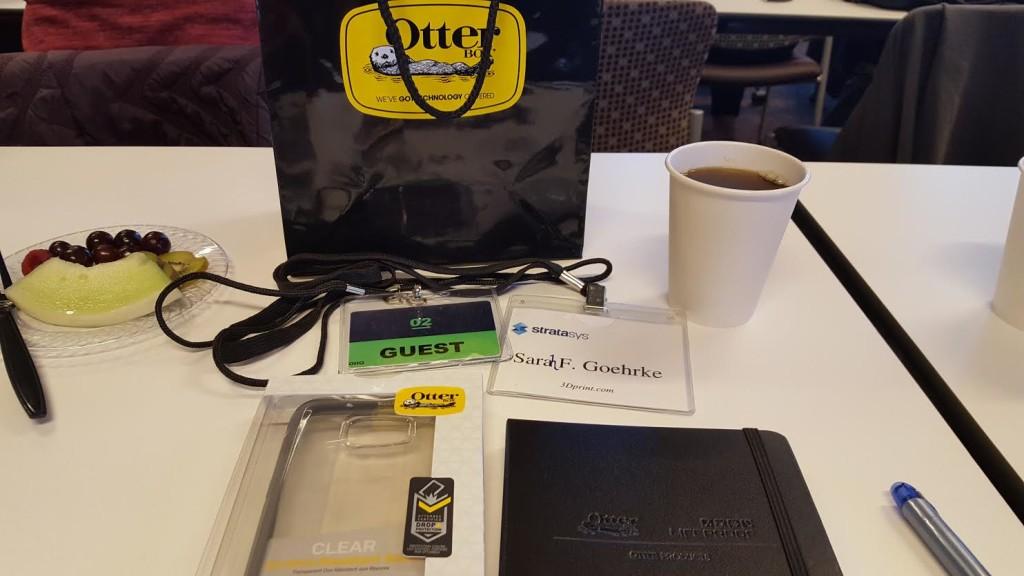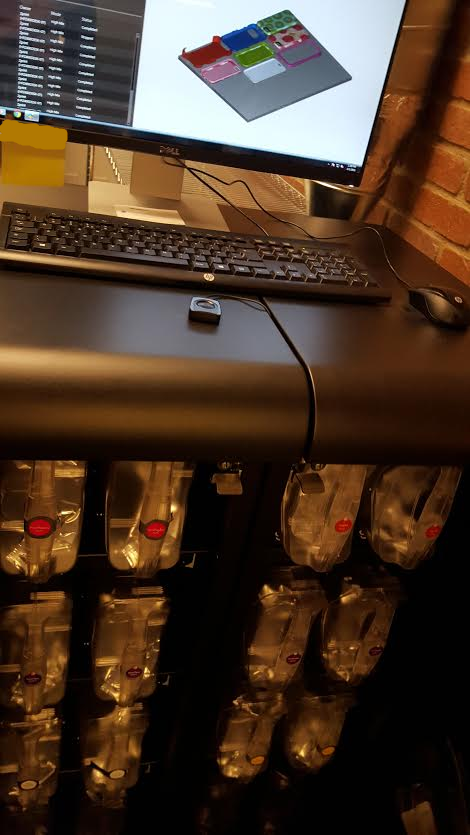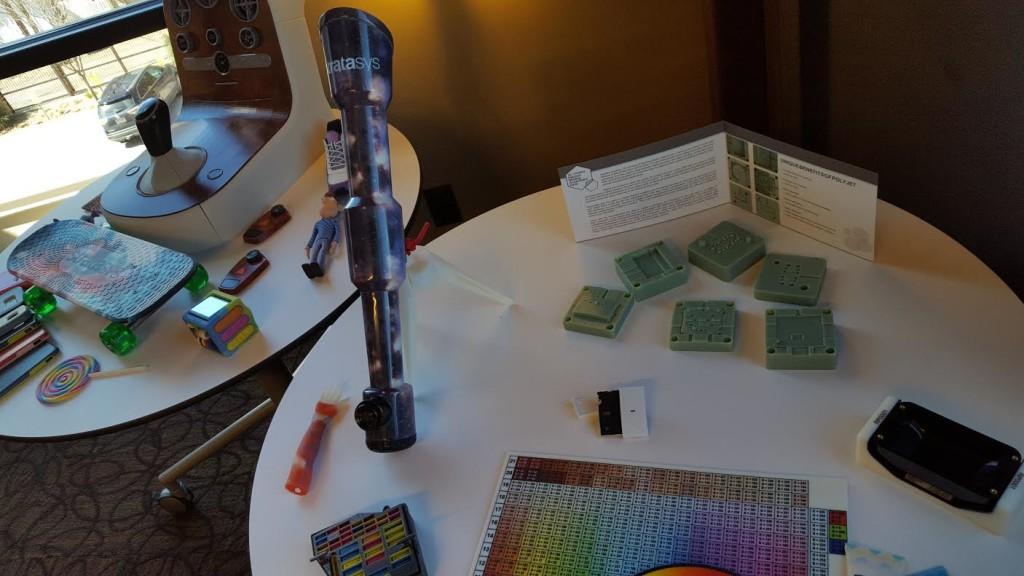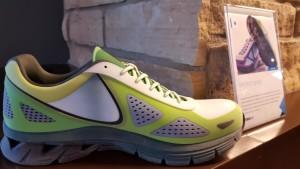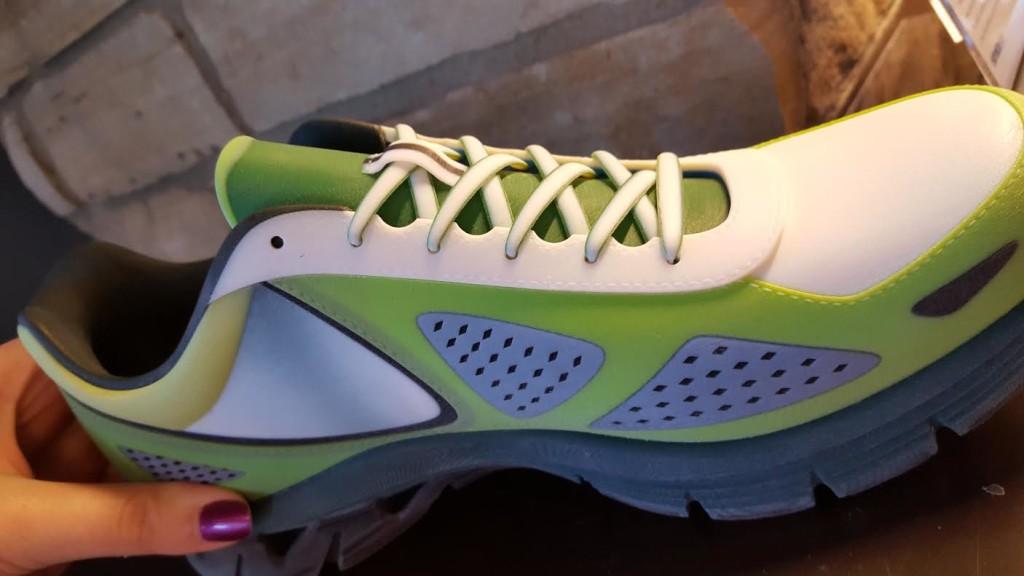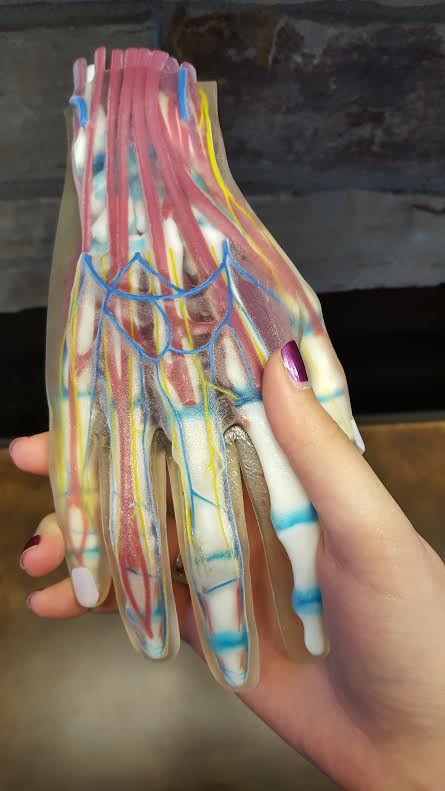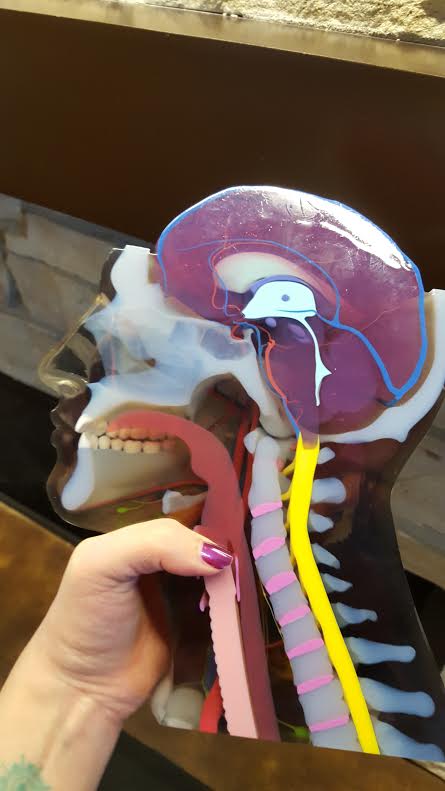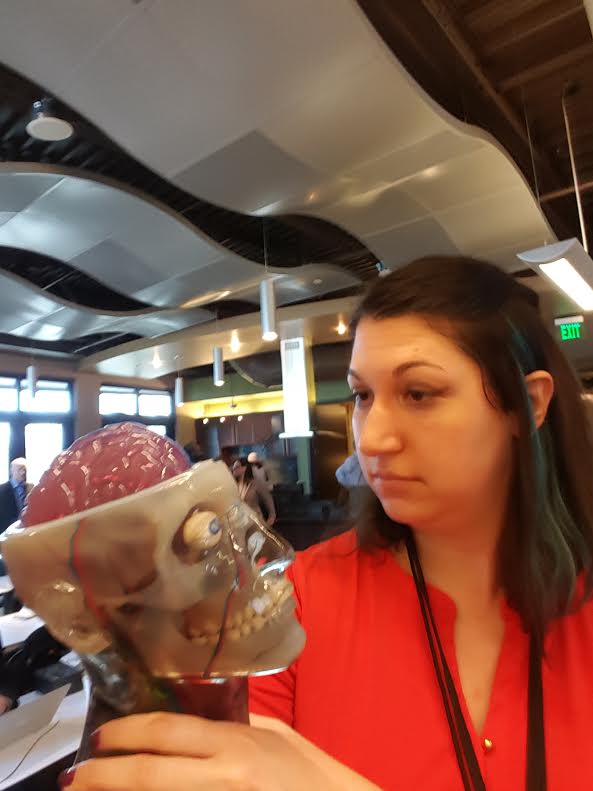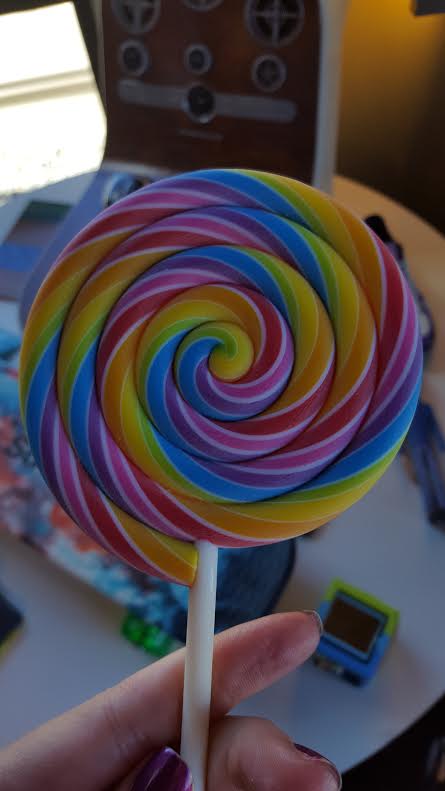“We’re at the beginning of something that’s going to shake up the world.”
With these words from Stratasys‘ Chief Business Officer, Joshua Claman, the odyssey finally began. Called with other journalists from across the world to beautiful Fort Collins, Colorado last week, I sat abundantly curious in the OtterBox headquarters, awaiting what was sure to be an incredible announcement. Any announcement preceded with so much fanfare and mystery from the company that’s been at the forefront of 3D printing for the last 25+ years was sure to intrigue — and Stratasys had brought us across the country/world to share some impressive news, for sure.
Taking us through the company’s history to set the scene, Claman reminded us of the growing uses of 3D printing in the world today, from STEM education from grade school through university (“we’ll see this generation of kids graduate college with a very different perspective,” he noted about current students’ design capabilities and possibilities) to the key importance of software development in the adoption rates of 3D printing technology, from desktop (“We believe desktop 3D printers are here to stay. Will they be in every home? We don’t know.”) to industrial machines, which commingle in many facilities (Claman noted that GE has several MakerBot desktop machines alongside their industrial 3D printers) — they are part of the workflow. A look at quantified charts illustrating adoption rates of 3D printers in the key areas of prototyping, production tooling, and end-use parts, Claman noted the upward trends both to date and projected in adoption over coming years and decades.
Stage set, Stratasys was ready to introduce us to the day’s true star — and so it was Claman presented the Stratasys J750.

Stratasys unveils a transformational, market-disruptive J750 3D printer, reinventing how products are imagined, designed and launched. J750 minimizes downtime associated with material changeovers. It features a six-cartridge material capacity to keep the most used resins loaded. [Image: Stratasys]
“Stratasys Invents 3D Printing. Again.”
This claim, bold and clear, heralded the introduction. With a focus squarely on prototyping, an industry projected to reach $17-25 billion by 2025 and with additive manufacturing set to account for up to 50% of that total, the J750 already has a lot to live up to — and that’s where details become important. What can this machine do?
“This is what an eight-year-old imagines a 3D printer can do when they hear about it,” Roger A. Kelesoglu, Director of Sales Enablement at Stratasys, said. In short, whatever can be imagined can come off the printbed.
The vision for the J750 is a 3D printer that can work alongside and even replace several other systems in place for prototyping activities; it can do it all. The third generation of multi-material 3D printer from Stratasys, the J750 follows the 2007 release of two-material Connex and 2014 release of the three-material Connex 1/2/3. This fourth-generation of PolyJet technology features six materials, four times the number of jets, a smaller drop size, twice the print speed, and just one step for multi-color and multi-material printing.
 The J750 is capable of printing with an incredible six materials — and more than 360,000 color combinations. By doubling the amount of materials a printer can use at one time, capabilities are more than doubled. The J750 works with Stratasys’ existing line of materials, from translucent to opaque, from rigid to flexible, and the company is working on developing more materials still (which they are not as yet ready to discuss). Additionally, the digitized color system can exactly match virtually any shade imaginable.
The J750 is capable of printing with an incredible six materials — and more than 360,000 color combinations. By doubling the amount of materials a printer can use at one time, capabilities are more than doubled. The J750 works with Stratasys’ existing line of materials, from translucent to opaque, from rigid to flexible, and the company is working on developing more materials still (which they are not as yet ready to discuss). Additionally, the digitized color system can exactly match virtually any shade imaginable.
“We live in a full-color world. So what you see is what you get (WYSIWYG),” Kelesoglu said. “The J750 accurately addresses the color gamut…from print to print or machine to machine for unmatched consistency.”
 The three main customers the J750 is geared toward include the designer, marketer, and engineer. The goal here is that anything any of these creative teams can dream up can be brought into the third dimension through one machine, in one print job, with no post-processing: no painting, no assembly. And with PolyJet Studio software, users are not limited by their tools.
The three main customers the J750 is geared toward include the designer, marketer, and engineer. The goal here is that anything any of these creative teams can dream up can be brought into the third dimension through one machine, in one print job, with no post-processing: no painting, no assembly. And with PolyJet Studio software, users are not limited by their tools.
“Freedom to dream, design and create,” the J750 promises.
Among the freedoms offered are:
- Freedom from investing in and maintaining several technologies to achieve the final part, including: systems, space, time and material inventory
- Freedom from incurring costly post-production expenses including painting, sanding, machining, over-molding
- Freedom from limited design capabilities of the machine, such as limitations of color, single materials, geometry, resolution
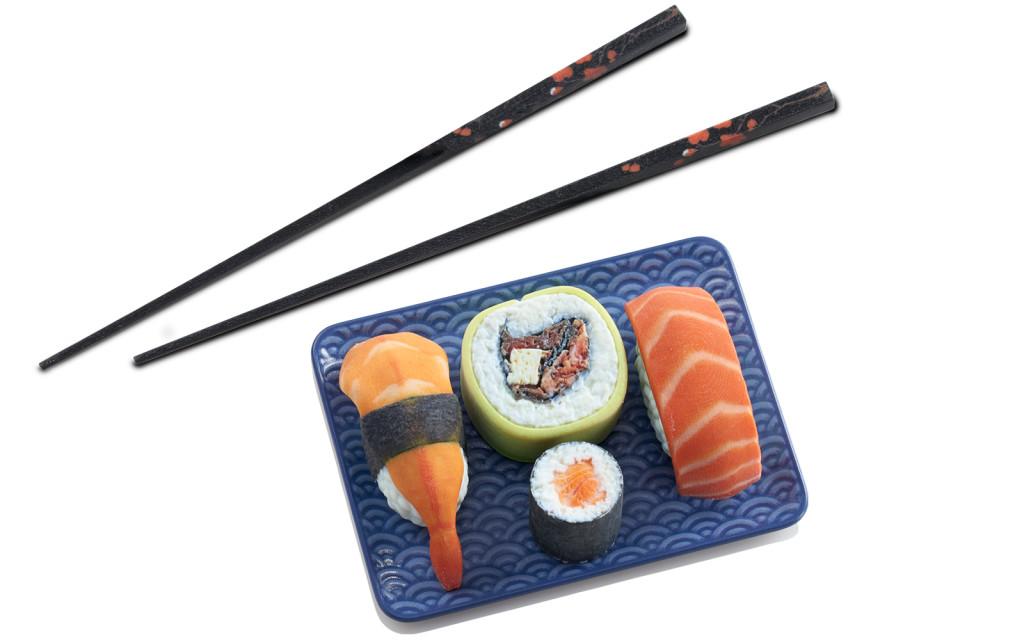
Continuing to shape the industry via a long line of industry firsts, the J750 3D Printer captures the power of full gradient color with an unmatched range of materials and textures to produce product-matching models and versatility no one can match. [Image: Stratasys]
Additionally, the J750 will feature a three-year warranty that will cover parts and labor as well as, in a new addition to their warranty policy, printheads.
The J750 is officially on the market today, April 4, and will be priced “at a premium” compared to their Connex line.
- Model Materials:
- Vero family of opaque materials including neutral shades and vibrant colors
- Tangofamily of flexible materials
- Transparent VeroClear and RGD720
- Digital Model Materials: Unlimited number of composite materials including:
- Over 360,000 colors
- Digital ABS and Digital ABS2 in ivory and green
- Rubber-like materials in a variety of Shore A values
- Translucent color tints
- Support Materials: SUP705 (WaterJet removable)
- Build Size: 490 x 390 x 200 mm (19.3 x 15.35 x 7.9 in.)
- Layer Thickness: Horizontal build layers down to 14 microns (0.00055 in.)
- Workstation Compatibility: Windows 7 and 8.1
- Network Connectivity: LAN – TCP/IP
- System Size and Weight:
- 1400 x 1260 x 1100 mm (55.1 x 49.6 x 43.4 in.); 430 kg (948 lbs.)
- Material Cabinet: 670 x 1,170 x 640 mm (26.4 x 46.1 x 25.2 in.)
- 152 kg (335 lbs.)
- Operating Conditions Temperature: 18-25 °C (64-77 °F); relative humidity 30-70% (non-condensing)
- Power Requirements: 100–120 VAC, 50–60 Hz, 13.5 A, 1 phase 220–240 VAC, 50–60 Hz, 7 A, 1 phase
- Regulatory Compliance: CE, FCC, EAC
- Software: PolyJet Studio3D printing software
- Build Modes
- High Speed:
up to 3 base resins, 27-micron (0.001 in.) resolution - High Quality:
up to 6 base resins, 14-micron (0.00055 in.) resolution - High Mix:
up to 6 base resins, 27-micron (0.001 in.) resolution
- High Speed:
- Accuracy: 20-85 microns for features below 50 mm; up to 200 microns forfull model size (for rigid materials only)
- Resolution X-axis: 600 dpi; Y-axis: 600 dpi; Z-axis: 1800 dpi
 To accompany this machine, Stratasys also revamped their software — as many voices in the 3D printing industry have pointed out, without software to live up to the promise of design, 3D printers are entirely limited. PolyJet Studio software features a “new intuitive user interface” that allows for ease and simplicity to streamline the process from design to print job. As the company notes, users can “simply choose materials, optimize the build and manage print queues. Assignment of colors, transparencies and rigidity is eased via familiar design controls. Color textures can be loaded fully intact via VRML files imported from CAD tools.”
To accompany this machine, Stratasys also revamped their software — as many voices in the 3D printing industry have pointed out, without software to live up to the promise of design, 3D printers are entirely limited. PolyJet Studio software features a “new intuitive user interface” that allows for ease and simplicity to streamline the process from design to print job. As the company notes, users can “simply choose materials, optimize the build and manage print queues. Assignment of colors, transparencies and rigidity is eased via familiar design controls. Color textures can be loaded fully intact via VRML files imported from CAD tools.”
Furthermore, material changes have been rendered obsolete. Downtime can thus be minimized, as six resins at a time (as well as support materials) can be loaded and ready to go.
“Newly designed, state-of-the-art print heads means simulated production plastics, like Digital ABS, can be 3D printed in half the time of other Stratasys PolyJet systems,” the company notes. “As 3D printed models are delivered complete with full colors, color textures and multiple materials, no time is wasted on painting and assembly.”
The J750 doesn’t just sound interesting — it looked incredible in person. Stay tuned for more details from my visit to OtterBox HQ to hear more about how Stratasys’ newest 3D printer works in action, and how it’s already proven its benefits in the testing lab and prototyping for the US’ top selling phone case.
“With the introduction of the J750, we are harnessing more than 25 years of experience to set a new historical milestone in 3D printing – reaffirming our commitment to keeping customers always on the cutting edge of innovation,” said Josh Claman, Chief Business Officer, Stratasys. “With its one-stop realism, the J750 is quite simply a game changer. By combining full color with multiple materials and a streamlined workflow, it recalibrates the impact of 3D printing in the product development cycle. Informed design decisions can be made immediately after the concepting stage. The time saved by eliminating the painting and assembly process can lead to faster product delivery times. The J750 is a multi-purpose system that can also produce production tools, manufacturing moulds, teaching aids, and other models – truly raising the bar in 3D printing versatility.”
Below is a quick video of the J750 in action at OtterBox:
Check out the video below of beta customer Synergy’s experience with the Stratasys J750, as well as more of my photos of the test prints on display. Are you surprised to hear about this awesome new printer? Discuss in the Stratasys J750 3D printer forum over at 3DPB.com.
[Images: All images, and above video, taken on-site at OtterBox by Sarah Goehrke, unless otherwise noted]
Subscribe to Our Email Newsletter
Stay up-to-date on all the latest news from the 3D printing industry and receive information and offers from third party vendors.
You May Also Like
Gorilla Sports GE’s First 3D Printed Titanium Cast
How do you help a gorilla with a broken arm? Sounds like the start of a bad joke a zookeeper might tell, but it’s an actual dilemma recently faced by...
Nylon 3D Printed Parts Made More Functional with Coatings & Colors
Parts 3D printed from polyamide (PA, Nylon) 12 using powder bed fusion (PBF) are a mainstay in the additive manufacturing (AM) industry. While post-finishing processes have improved the porosity of...
$25M to Back Sintavia’s Largest Expansion of Metal 3D Printing Capacity Since 2019
Sintavia, the digital manufacturing company specializing in mission-critical parts for strategic sectors, announced a $25 million investment to increase its production capacity, the largest expansion to its operations since 2019....
Velo3D Initiates Public Offering in a Bid to Strengthen Financial Foundations and Drive Future Growth
Velo3D (NYSE: VLD) has been among a number of publicly traded 3D printing firms that have attempted to weather the current macroeconomic climate. After posting a challenging financial report for 2023,...


